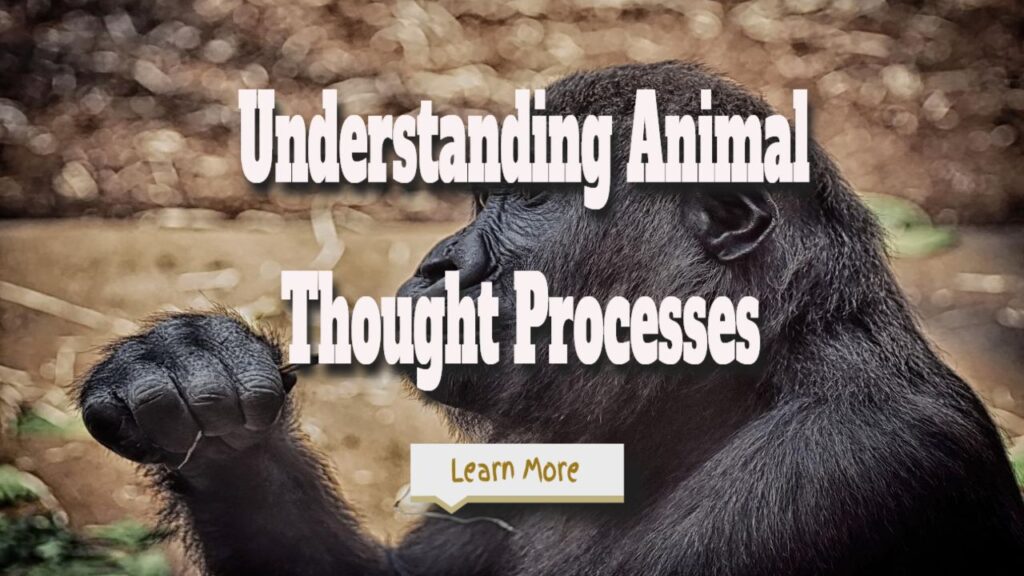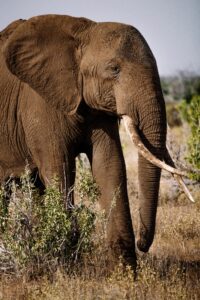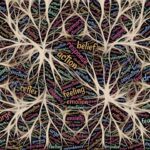How Close Are We to Understanding Animal Thought Processes
How Close Are We to Understanding Animal Thought Processes: The inner lives of other species may be far more complex than scientists previously believed.
People at Tangalooma, off the coast of Queensland, began throwing fish into the water in 1992 to feed the wild dolphins that lived there.
The dolphins began feeding humans by dropping fish onto their pier in 1998. The people felt they were amusing themselves by feeding the animals. What were the dolphins thinking, if anything?
Charles Darwin felt that animal and human mental capacities differed only in degree, not kind – a logical conclusion if one is equipped with the radical new concept that one evolved from the other.
His final major book, The Expression of Emotions in Man and Animals, investigated joy, love, and grief in birds, domestic animals, primates, and diverse human races.
However, Darwin’s approach toward animals was at odds with a lengthy European tradition of thought that held animals had no consciousness.
René Descartes, a great 17th-century philosopher, claimed that humans were creatures of reason connected to God’s mind. At the same time, animals were merely machines of flesh – living robots. One of his disciples said this: “They eat without pleasure, cry without pain, grow without knowing it: they seek nothing, fear nothing, and know nothing.”
The field of biology was more in line with Descartes than Darwin for most of the twentieth century. Students researching animal behaviour did not rule out the possibility that animals had consciousness, but they dismissed the subject as almost meaningless because it was impossible to answer.
One could investigate an organism’s input (for example, food or habitat) or output (its behaviour). However, the organism remained a black box: unobservable phenomena like sentiments or thoughts were outside the scope of empirical investigation.
“In any genuine endeavour to explain animal behaviour, one should studiously avoid imputing conscious thoughts to them, since this is unverifiable [and] hollow,” wrote one such “behaviourist” in 1992.
However, there was considerable dissent against these stringent standards by that time. Donald Griffen, a professor at Rockefeller University in New York, took the bull by the horns (ignoring what the bull might have thought) and published “The Question of Animal Awareness” in 1976.
He contended that animals could think, and their ability to do so may be scientifically tested.
A significant deal of study, both in the field and in the laboratory, has shifted the consensus away from strict behaviourism and toward this Darwin-friendly viewpoint over the last 40 years.
Progress has not been easy or rapid; as behaviourists cautioned, both sorts of evidence can be deceptive. Laboratory testing can be rigorous, but they are always based on animals that do not behave in the wild.
Anecdotal observations from the field can be dismissed. Large-scale research over years or decades can avoid this difficulty, although such studies are uncommon.
Nonetheless, most scientists now believe they can confidently state that some animals absorb information and exhibit emotions in ways consistent with conscious mental processes.
They all agree that animals have complex mental abilities, ranging from rats and mice to parrots and humpback whales; that a few species of animals possess qualities once thought to be unique to humans, such as the ability to name objects and use tools; and that a few animals – primates, corvids (the crow family), and cetaceans (whales and dolphins) – have something akin to what is called culture in humans, namely that they develop particular behaviours that are.
The Dolphin
No animal has all of the qualities of the human mind, although almost all of them may be found in one or more animals.
Consider Billie, a five-year-old wild bottlenose dolphin who was hurt in an airlock. She was brought for medical care to a South Australian aquarium, where she spent three weeks in captivity with dolphins who had been trained in various manoeuvres.
She, on the other hand, was never trained. Local dolphin watchers were astounded to see her “tail walking” – a manoeuvre in which a dolphin rises above the water by waving its fins just below the surface and gently going backwards, similar to Michael Jackson.
Billie had allegedly learnt the trick by observing her former swimming pals do it. Even more startling, five other dolphins in her group began wagging their tails immediately after, even though this action served no practical purpose and cost a lot of energy.
Such behaviour is difficult to comprehend unless one imagines a mind that enjoys what it sees and wishes to replicate the activities of others (see “The Imitative Dolphin”).
This, in turn, reveals a lot about the brain. The term “mirror neurons” would be a safe bet if you had to guess what’s going on in Billie’s head. Contagious yawning may be the result of mirror neurons, which are neurons that activate when one observes behaviour that elicits a similar response in oneself.
Many learning processes may necessitate this relationship between perception and action, and it appears accurate for some sorts of empathy in humans.
Mirror neurons are essential to scientists trying to identify the basis for human mental functioning, or at least correlates of that functioning, in the structure of the human brain.
One of the current arguments regarding animals as entities with minds is the presence of these physical correlates in nonhuman brains. Mirror neurons exist, as do spindle cells (also known as von Economo neurons), which play a role in expressing empathy and processing social information.
Parts of chimp brains correspond to Broca’s area and Wernicke’s region, which are connected with language and communication in humans. Brain mapping reveals that the neurological processes that resemble emotions in rats are identical to those in humans.
A group of neuroscientists described in 2012, “The neural mechanisms that form consciousness are not unique to humans. Nonhuman species, including all mammals and birds, and many other creatures, have these neural substrates.”
However, arguing that animals have a biological basis for awareness does not imply that they genuinely think or feel. Ideas from legal science may be more beneficial than those from neurology in this case.
When a disaster harms a person’s condition, the courts may have to assess what amount of legal protection should be provided. In such circumstances, courts ask questions like, “Is the person self-aware?” Can he identify others as individuals? Is it capable of controlling its behaviour?
Does it experience pleasure or pain (i.e., exhibit emotion)? Such inquiries can disclose a great deal about animals.
The capacity to recognize oneself in a mirror is the most typical self-awareness test. This entails seeing oneself as a person distinct from other entities.
Gordon Gallup, an American psychologist, created the test in 1970. Still, its origins can be traced back further: Darwin wrote about Jenny, an orangutan who played with a mirror and was “astonished beyond measure” by his reflection.
Dr Gallup put an odourless stain on his patients’ faces and watched their reactions when they saw their reflections.
When they touched the stain, they realized the mirror picture was their own, not another animals. Most persons demonstrate this capacity between the ages of one and two.
Dr Gallup revealed that chimps had this skill as well. Orangutans, gorillas, elephants, dolphins, and magpies have demonstrated this ability since then.
This is not the case with apes or dogs, maybe because dogs recognize one another by smell. Therefore the test provides no meaningful information to them.
Recognizing oneself is one thing; what about recognizing others—not just as objects, but as things with similar objectives and aspirations as oneself but aimed at other goals?
The Monkeys
Some animals also pass this test. Santino is a monkey in Sweden’s Furuvik Zoo. Keepers noted in the 2000s that he collected little mounds of boulders and hid them in his cage, even making shelters for them so he could throw them at zoo visitors who irritated him later.
According to Lund University’s Mathias Osvath, this behaviour demonstrates various sorts of mental maturity: Santino was able to remember a specific experience in the past (being harassed by visitors), plan for a future occurrence (throwing rocks at them), and mentally design a new circumstance (chasing the visitors away).
The ability to understand that other people have different objectives and want is referred to as the “theory of mind” by philosophers. Chimpanzees are capable of this. Santino appeared to understand that if the zookeepers could, they would stop him from hurling rocks.
As a result, he hid the weapons and controlled his rage: he was calm when collecting the stones but enthusiastic when throwing them.
The Florida-based Centre for Great Apes serves as a sanctuary for apes. male chimps living with 16-year-old cerebral palsy sufferer Knuckles do not subject him to their typical claims of dominance.
Chimpanzees are also aware of their ability to alter the beliefs of others; in competition for food, they frequently fool each other.
Another indicator of legal personality is the ability to experience pleasure or suffering – to experience emotions.
This was frequently seen as evidence of a rich emotional life, which led Descartes’ followers to believe that animals could neither feel nor think.
According to Peter Singer, an Australian philosopher and doyen of “animal rights,” suffering is the most important of all emotions because, if animals share this human capacity, people should be concerned about animals’ suffering as much as their own.
Animals experience feelings such as fear. This, however, can be regarded as automatic, similar to humans crying out in pain.
Fear was no difficulty for behaviourists because it was a conditioned reaction they understood precisely how to induce. The essential question is whether animals have feelings accompanied by mental experience. This is not an easy task.
Nobody knows what other people mean when they talk about their feelings, and understanding what mute animals mean are nearly impossible. Nonetheless, there are some telling hints, particularly about what might be considered compassion.
Some animals appear to have compassion, or at the very least concern, for sick and injured members of their community. In the wild, stronger chimps assist weaker ones in crossing highways.
The Grieving Elephant
Elephants weep for their deceased (see “The Mourning Elephant”). Hal Markowitz, subsequent director of the San Francisco Zoo, famously trained Diana monkeys to acquire food by sliding a coin into a slot.
When the eldest female couldn’t figure it out, a younger, unrelated guy inserted the money for her and left her to eat in peace.
There have also been reports of animals going out of their way to assist their conspecifics. Moko, a bottlenose dolphin, led two pygmy sperm whales out of a maze of sandbars off the coast of New Zealand in March 2008.
The whales appeared to be completely bewildered, having beached themselves four times. Humpback whales have been known to save seals from killer whale attacks, while dolphins have saved humans from similar attacks.
At first appearance, such compassion for others appears moral – or at the very least sympathetic.
In a few cases, animal protectors have been shown to pay the price for their kindness. Elephant researcher Iain Douglas-Hamilton reports a young female who was so seriously injured that she could barely walk at a snail’s pace.
For 15 years, the rest of her group stayed with her to protect her from predators, even if it meant they couldn’t forage as far. Russell Church of Brown University carried up an experiment in 1959 in which lab rats in half of a cage could obtain food by moving a lever.
When the first group realized this, they stopped pulling the lever and went in search of their food. In a similar experiment with rhesus monkeys, published in the American Journal of Psychiatry in 1964, one monkey stopped signalling to feed for 12 days after witnessing another receive a shock.
There are other instances where animals prefer one form of emotion over another. In the classic study of American psychologist Harry Harlow, rhesus monkeys who had been separated from their mother were offered a choice between two replacement animals.
One was fashioned from wire and equipped with a drinker, whereas the other was made of cotton but lacked food. Almost all of the infants’ time was spent cuddling the cloth mother.
When animals are self-conscious, aware of their surroundings, and have some degree of self-control, they share some of the characteristics used in law to describe people.
If they express emotions and feelings in a not solely natural way, they should be acknowledged in the same way that human feelings are. Language is the most commonly accepted characteristic of humans. Can we say that animals utilize language meaningfully?
Animals communicate constantly and do not require enormous brains to do so. Karl von Frisch, an Austrian ethologist, proved in the 1940s that honeybees’ “tail dances” communicate how far away food is and in which direction it is moving.
Birds sing intricate songs to indicate their territory or to attract a partner. Groups of whales also do this (see “The Singing Whales”). However, it is difficult to determine what information or objectives are hidden underneath all of these songs.
It’s more likely that the bees are transmitting an automatic report of their recent excursions than saying, “There’s pollen over there, you lazy bones.”
Vervet monkey vocalizations, for example, provide more information. They issue distinct alarm sounds in response to different predators that necessitate different reactions. There’s one for leopards (jump onto the highest trees), one for eagles (hidden in the foliage), and one for snakes (swim in the water) (stand upright and look around).
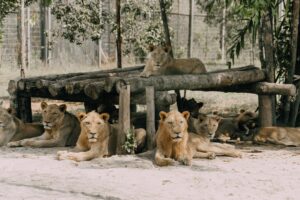
The monkeys must be able to distinguish between the various calls and know when to use which one. Animals who have grown up with humans are far more capable. Chaser, a border collie, understands more than 1,000 words. She can pick a particular toy from a bunch of others.
This demonstrates that she comprehends the concept of an auditory pattern representing a physical item. Linguist Noam Chomsky once stated that only humans are capable of doing this. Surprisingly, when asked to grab a toy with an unusual name from a pile of familiarly called toys, she understands what she is being asked for.
Betsy, another Border Collie, returns with a photograph of something, demonstrating that she knows that a two-dimensional image might represent a three-dimensional object.
Washoe, a female chimp taught sign language by two University of Nevada researchers, is astounding. Washoe started talks and requested items like food.
However, evidence that many animals can convey their thoughts to others in a human language when raised with humans is not the same as stating they utilize language like humans. Only a handful have a hint of grammar, for example, the ability to alter and combine words to generate new meanings.
Alex, an African grey parrot, created new words by combining existing ones: He named an apple “banner,” a combination of banana and cherry.
However, these unusual situations have resulted from close collaboration with humans. The employment of grammar, much alone complicated grammar, is unknown in the wild. Furthermore, animals are not comparable to the stories humans tell.
Can anything else be termed uniquely human if language can? Until recently, culture was thought to be a secondary human attribute.
Complex behaviours passed down through instruction, imitation, and conformism rather than genetic inheritance or environmental factors were commonly thought to be unique to humans. However, it is becoming clear that other species, like humans, have their own cultures.
Hal Whitehead of Dalhousie University in Nova Scotia and Luke Rendell of the University of St. Andrews in Scotland argue in their book, The Cultural Lives of Whales and Dolphins, that all cultures have five distinct features: a unique technology, teaching, and learning; a moral component with rules that underpin “the way we do things” and punishments for violations; an acquired, the difference between insiders and outsiders is more learned than intrinsic, and there is a cumulative quality to insider knowledge.
These attributes, when combined, enable individuals in a group to accomplish things they cannot do alone.
Take a look at the crow for the first attribute. New Caledonian crows are the animal kingdom’s finest tool manufacturers.
They manufacture hooks by chewing V-shaped twigs into form. They make toothed saws out of pandanus leaves.
And they produce their tools in various ways over the island.
Gavin Hunt of the University of Auckland discovered that hooks and saws in two New Caledonian locations varied systematically in terms of the size and number of cuts necessary to manufacture them, as well as whether they are generally left- or right-handed.
The two crow groups were culturally diverse because culture denotes “the way we do things around here.”
Chimpanzees are currently known to utilize over a dozen tools, including clubs for beating, pestles for grinding, fly brooms, grass blades for capturing termites, spongy leaves for absorbing water, and pebbles as nutcrackers.
They, like New Caledonian crows, are employed differently by different groups. Cambridge University’s William McGrew contends that the tools of western Tanzanian chimps are as intricate as the most simple human tools, such as early human artefacts discovered in East Africa or those used by Tasmanian aborigines in the past.
It is possible to learn how to manufacture and use tools. This is not the only way that animals may educate. Meerkats eat scorpions, which are extremely dangerous prey that cannot be learnt to hunt by trial and error.
That is why elder meerkats teach the younger ones gradually. They first immobilize a scorpion and then let the baby meerkat finish it. The kids are then taught to hunt a little less damaged creature, and so on until the neophyte is mature enough to go out and kill a scorpion on his own.
Almost all meerkats do this. What is taught elsewhere may alter, with just some animals acquiring new tricks. The tale of Billie the tail-wagger exemplifies how whales and dolphins can learn new behaviours from one another.
The Whales
In 1980, a humpback whale off the coast of Cape Cod began using an unconventional technique to catch fish. It smacked its fluke on the water’s surface, plunged and swam around, and expelled a cloud of air bubbles.
The prey creatures crowded together for protection, confused by the noise and terrified by the rising circle of bubbles. The whale then emerged from the bubble cloud with a mouthful of fish.
Bubble feeding, like lobtailing, is a well-known strategy for whales to locate food. The fact that the first method was methodically paired with the second appeared to be an invention – and it quickly became quite popular.
Only nine years after the first Cape Cod whale began lobtail feeding, approximately half of the humpback whales in the area were doing so by 1989. Because their mothers did not apply the new technique, most of the whales were younger and could not have inherited it.
The researchers believe that the younger whales imitated the original practitioner and propagated the method. It is unknown how the first whale came up with the notion, as well as if it is a superior method of feeding or simply one that is growing more popular.
Cultures rely on standards for acceptable behaviour, technology, techniques, and ideologies. Fairness appears to be a universal requirement among social creatures. For example, dogs that are routinely selected for testing are rejected by other dogs at Eotvos Lorand University in Budapest.
It turns out that all dogs desire to take part in these exams because they obtain human attention; those who are chosen too frequently are perceived to have an unfair advantage. Capuchin monkeys who take part in research keep track of their incentives.
Suppose one is given a lousy prize (for example, a slice of cucumber), the other is given a sweet grape, and the first declines to finish the test. Chimpanzees do the same thing.
Animals, like most cultures, distinguish between outsiders and insiders. Orcas, also known as killer whales, stand out in this regard since they have a repertory of calls that are unique to the group in which they live, almost like a dialect.
Drs. Whitehead and Rendell liken them to characteristics found in tribal societies. Different pods of orcas graze on different prey and rarely interbreed. Most of the time, the various factions ignore one another.
However, now and then, one group will viciously attack another. This could have nothing to do with food competition or females. The Vancouver Aquarium’s Lance Barrett-Lennard relates this to xenophobia, a particularly harsh and forceful means of discriminating between insiders and outsiders.
However, whereas animals share four cultural features, they do not share one. Human culture is arguably notable for changing over time, building on previous triumphs to produce everything from iPhones to modern medicine to democracy.
In animals, nothing of the sort has been observed. Certain parts of animal behaviour appear to vary in culturally significant ways and are likely to alter fundamentally. For example, the South African culling strategy of the 1990s, in which the oldest elephants were murdered and their children were redistributed, caused substantial upheavals in the animals’ generally ordered matriarchal society.
Because there were no elders to discipline them, young elephants grew incredibly violent. In other circumstances, such disruption may not appear severe from an anthropomorphological standpoint (see “the peaceful baboons”).
However, animal societies have yet to demonstrate consistent, adaptive change – cultural advancement- whether the shocks are positive or negative. Knowledge accumulates in the oldest individuals—when drought struck Tanzania’s Tarangire National Park in 1993, elephant families led by matriarchs who remembered the catastrophic drought of 1958 fared best—but it dies with them.
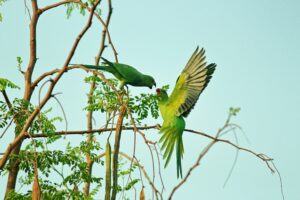
Grammatical language may be ruled out entirely; the acquired manufacturing of tools for some species is now unquestionable, but many conclusions fall somewhere in the centre, neither clearly in nor out. Acceptance is conditional on meeting the conditions of the evidence.
If you were in a criminal court and had to prove animal empathy beyond a reasonable doubt, you might be hesitant to accept it. In a civil case requiring a preponderance of proof, you would very certainly infer that animals had empathy.
Three implications can be drawn from this standard. To begin, certain animals have minds. This view is supported by physiological evidence for brain function, communication, and the adaptability of their responses to their surroundings.
Language and organized religion are not hallmarks of civilization in primates, corvids, or whales (although Jane Goodall, a noted zoologist, suggests chimpanzees express a pantheistic delight in nature).
Furthermore, animal abilities are inconsistent when compared to human abilities. Dogs can learn the language but cannot identify their reflections. Clark’s nutcracker, a crow family member, buries up to 100,000 seeds in a season and remembers where it planted them months later—but unlike other corvids, it does not produce tools.
These specific, goal-directed talents correspond to modern thinking about the human mind, which sees it as a collection of subroutines for specific jobs rather than a pure reasoning engine that can be applied to all parts of life. According to this perspective, the human mind is a Swiss Army knife, while an animal’s mind is a corkscrew or a pair of tweezers.
Consider Ayumu, a young chimp living at Kyoto University’s Primate Research Institute.
Ayumu was given a memory assignment in which a random sequence of numbers appears on a touchscreen briefly before being concealed by electronic squares. Ayumu must tap the screen squares in the same order as the numbers buried beneath.
People usually pass this test with five numbers to study and 500 milliseconds. The human success rate drops dramatically when there are nine numbers or fewer times. With only 60 milliseconds, show Ayumu nine numbers, and he casually taps the numbers in the correct order with his knuckles.
Humans with what is known as eidetic or flash memory can achieve something similar, but in chimps, this appears to be the norm. Is this a feature that chimps have gained since their last common ancestor with humans or one that humans have lost during the same period? In what ways might a chimp’s feature of having a mind change?
What difference does having a mind make in a society where everyone remembers such things? Animals may think in ways humans can’t yet interpret because they’ve evolved to sensory and mental realms that are utterly unfamiliar to people, possibly domains that haven’t prompted a need for language.
There is no doubt that octopuses are intellectual; they are exceptional problem solvers. Can scientists possibly imagine what an octopus thinks and feels?
The third general reality appears to be that animals have a mind-society relationship.
The most intelligent wild animals (primates, whales, elephants, and parrots) are long-lived creatures that live in complex societies that value knowledge, social interaction, and communication.
It’s plausible to believe that their minds, like ours, evolved in response to their social surroundings (see “The Lone Orca”). And this may be the missing piece of the puzzle for interspecies mind-melding.
Humans and bottlenose dolphins have fished together for generations off the coast of Laguna in southern Brazil. Dolphins swim toward the beach, herding mullets toward the fisherman.
Before deploying their nets, the men wait for a signal from the dolphins – a distinctive dive. The dolphins are in command, initiating the drift and providing the critical signal, but only a few do so.
Humans must understand which dolphins are herding the fish and pay close attention to the signal if fishing is to succeed.
Both types must learn the requisite skills of mammals. They are passed on from father to son in humans and from mother to calf in dolphins. In this scenario, how much do the species differ?
The post How Close Are We to Understanding Animal Thought Processes appeared first on https://gqcentral.co.uk

